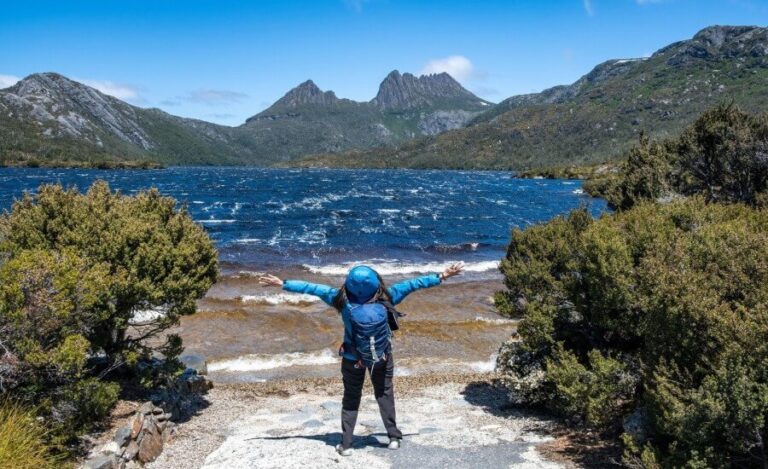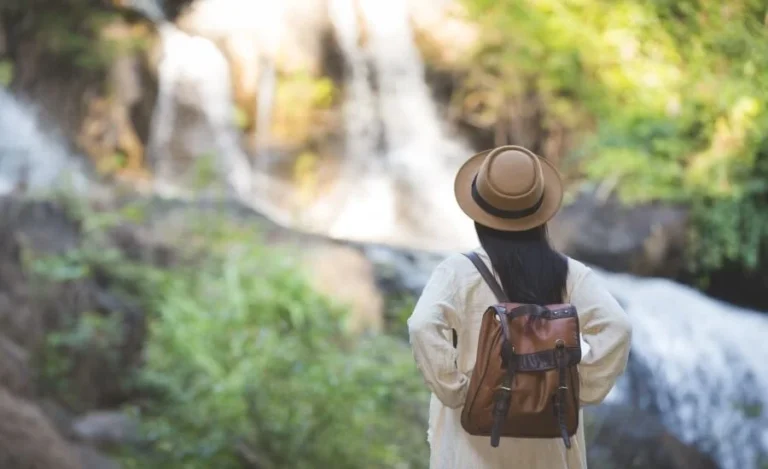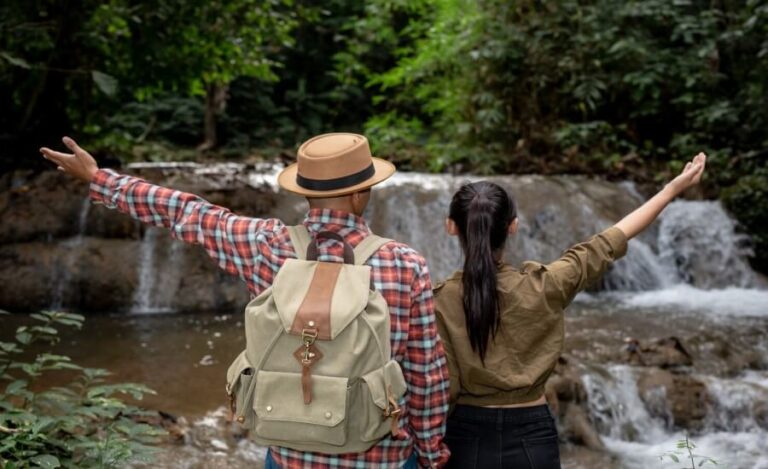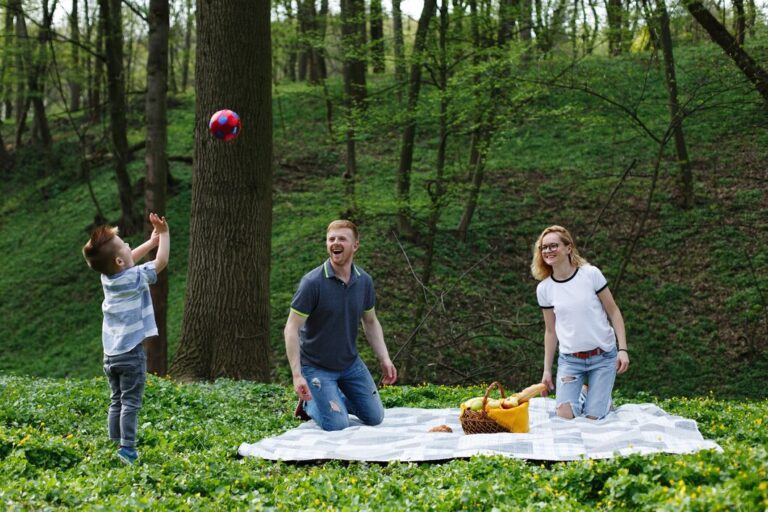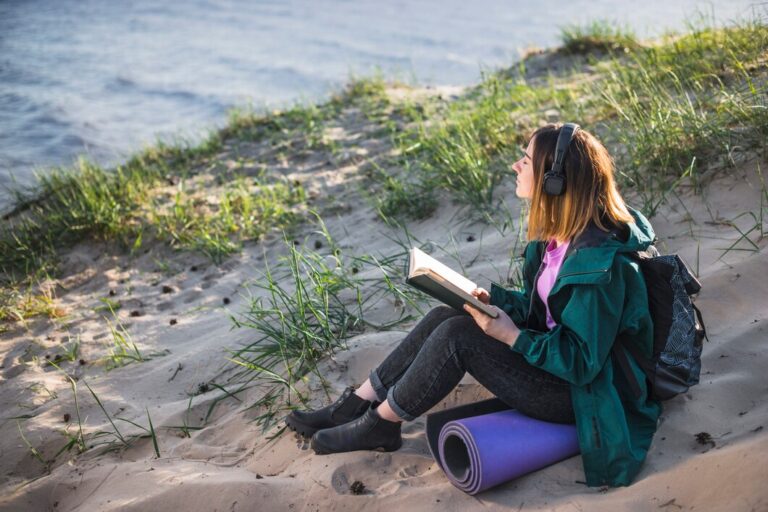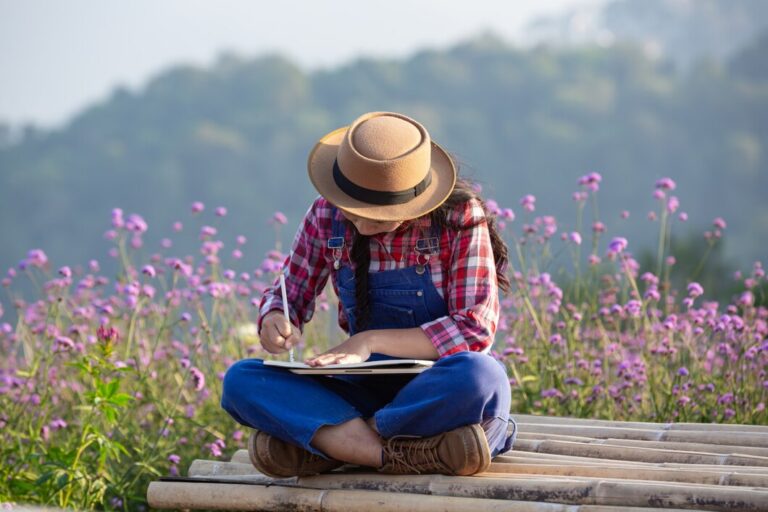
Think about how we often approach photography while traveling. A frantic rush from one viewpoint to the next, snapping hundreds of pictures, driven by a fear of missing out or the pressure to capture postcard-perfect shots for social media. We ‘collect’ images rather than connect with experiences. The camera, instead of being a tool for seeing, becomes a barrier, mediating our interaction with the world and keeping us tethered to the digital realm of likes and shares. We look at things just long enough to frame them, click, and move on, our minds already racing ahead.
But what if photography could be different? What if the camera could become a tool for deepening presence, enhancing observation, and fostering a meditative connection with our surroundings? Imagine a walk where the primary goal isn’t just taking pictures, but truly seeing – noticing the subtle play of light, the intricate texture of a leaf, the quiet stories held in weathered stone. This is the essence of Meditative Photography Walks for Mindful Travel: a practice that transforms photography from a hurried act of documentation into a slow, contemplative exploration, yielding not just images, but a richer, more meaningful travel experience. This guide will walk you through this mindful practice, its benefits, and how it can help you create travel art that resonates with genuine presence.
What is a Meditative Photography Walk?

At its heart, a Meditative Photography Walk is a mindful practice that uses photography as a tool to cultivate presence and deepen observation. It’s less about capturing technically perfect or conventionally ‘beautiful’ images and more about the process of seeing. It combines the grounding rhythm of walking with the focused attention required by photography, encouraging a slower, more deliberate interaction with the environment. Think of it as visual meditation in motion.
Unlike typical photo walks aiming to cover maximum ground or hit specific landmarks, a meditative walk emphasizes slowness and sensory awareness. You might cover only a short distance, lingering where your attention is naturally drawn. The focus shifts from what you photograph to how you see and experience the world around you. It involves consciously quieting the inner critic, letting go of preconceived notions about what makes a ‘good’ photo, and opening yourself up to noticing details often overlooked in our usual rush.
The ‘meditative’ aspect comes from bringing mindful awareness to the entire process: the feel of your feet on the ground, the quality of the light, the sounds and smells around you, your own breath, and the subtle shifts in your perception as you look through the lens (or simply observe). The camera becomes an extension of your mindful gaze, prompting you to pause, look closer, and appreciate the ordinary extraordinary. It’s about finding beauty in imperfection, patterns in chaos, and stories in silence. The resulting photographs are secondary; the primary ‘art’ created is the state of mindful awareness itself.
The Unseen Benefits: Why Walk, Observe, and Click Mindfully?

Embracing Meditative Photography Walks offers benefits far beyond just potentially interesting images. It’s a practice that nourishes your well-being, deepens your travel experiences, and unlocks creativity by fostering a disconnect from digital noise and a reconnect with direct experience.
Firstly, it cultivates deep presence and reduces mental chatter. By focusing intently on observing your surroundings through the lens of mindful awareness, you naturally quiet the endless stream of thoughts, worries, and to-do lists. The act of slow walking and deliberate seeing anchors you firmly in the present moment. This state of presence combats the feeling of being constantly distracted or overwhelmed, often exacerbated by technology and fast-paced travel. It’s an active antidote to the attention economy.
Secondly, this practice dramatically enhances sensory awareness and appreciation for detail. When you slow down and look with intention, you start noticing things you’d normally walk right past: the delicate geometry of a spiderweb, the way light filters through leaves, the texture of peeling paint on a door, the subtle colour variations in a stone. This heightened awareness enriches your perception of the world, making even familiar places feel new and fascinating. You learn to find beauty everywhere, not just in grand vistas.
Thirdly, Meditative Photography Walks boost creativity and change your artistic perspective. By releasing the pressure to capture ‘perfect’ shots or cater to trends, you free yourself to explore subjects that genuinely intrigue you. You might find yourself drawn to abstract patterns, quiet moments, or unconventional compositions. This focus on personal resonance over external validation often leads to more unique and meaningful creative expression. The process itself becomes the inspiration. Have you ever felt creatively stuck? Slowing down and simply seeing can be incredibly liberating.
Key Benefits:
- Cultivates Deep Presence: Anchors you in the here and now.
- Reduces Stress & Mental Clutter: Acts as a form of active meditation.
- Enhances Sensory Perception: Deepens your observation of light, texture, color, and form.
- Fosters Gratitude & Wonder: Encourages appreciation for everyday beauty.
- Boosts Authentic Creativity: Frees you from expectations and unlocks personal vision.
- Deepens Connection to Place: Creates a more intimate understanding of your surroundings.
- Transforms Your Relationship with Photography: Shifts focus from outcome to process.
Your Path to Presence: How to Embark on a Meditative Photo Walk

Starting a Meditative Photography Walk is simple and requires no special expertise, only intention. It’s about creating a structure that supports mindful observation. Here’s a step-by-step guide to help you begin:
1. Set Your Intention (and Minimal Gear): Before you start, take a moment to clarify your intention. Is it to find calm, notice details, explore light, or simply be present? Choose a simple camera setup – maybe just one prime lens, or even just your smartphone camera used mindfully (turn off notifications!). The goal is to minimize distractions, including complex gear choices. Leave unnecessary bags or equipment behind.
2. Begin with Mindful Arrival: As you start your walk, bring awareness to your body. Feel your feet connecting with the ground. Notice your breath. Take a few deep breaths to center yourself. Let go of any destination or specific photo goals. The journey itself is the purpose.
3. Walk Slowly and Sensuously: Move at a slower pace than usual. Pay attention to the physical act of walking. Engage all your senses: What do you see, hear, smell, feel (the air on your skin, the texture of a railing)? Let your gaze soften and wander without actively searching.
4. Let Curiosity Guide You: Don’t look for photos. Instead, allow yourself to be drawn naturally to whatever catches your attention – a patch of light, an interesting texture, a colour combination, a shadow. Trust your intuition. There’s no need to photograph everything that interests you; sometimes simply observing deeply is enough.
5. Pause and Observe Before Lifting the Camera: When something catches your eye, pause. Spend time simply looking, without the camera. Walk around the subject if possible. Notice it from different angles. How does the light interact with it? What details emerge upon closer inspection? This mindful observation is the core of the practice.
6. Photograph Intentionally (If You Choose): If you decide to take a picture, do so deliberately. Bring the camera to your eye (or screen). Notice the framing. Consider the composition simply. Take one or two shots, mindfully adjusting if needed. Pay attention to the physical sensation of clicking the shutter. Then, lower the camera and observe again. Avoid rapid-fire shooting or excessive reviewing on the spot.
7. Embrace Imperfection: Let go of the need for technically perfect shots. Focus on capturing the feeling, the light, the texture that drew you in. Some of the most evocative images are imperfect by conventional standards. The value lies in the mindful connection made during the process.
8. Conclude Mindfully: As you end your walk, take a few moments to stand still. Notice how you feel compared to when you started. Offer silent gratitude for the time, the place, and the things you noticed.
Prompts for Deeper Seeing: Exercises for Your Walk

Sometimes, having gentle prompts can help deepen your focus during a Meditative Photography Walk. These are not rigid rules, but invitations to explore specific ways of seeing:
- Focus on Light: Dedicate part of your walk solely to observing light. How does it fall on different surfaces? Where are the shadows? Look for reflections, highlights, silhouettes, diffused light, dappled light. Photograph only light itself or its effects.
- Texture Hunt: Actively look for interesting textures. Get close (physically or with your lens). Explore rough bark, smooth pebbles, peeling paint, wrinkled fabric, rusty metal. How does the light reveal or conceal texture?
- Colour Exploration: Choose one colour and look for it everywhere during your walk. Notice its different shades and how it interacts with other colours. Alternatively, focus on capturing monochromatic scenes or subtle colour harmonies.
- Find the Frame: Look for natural frames within the environment – archways, windows, branches – and compose shots looking through them. How does framing change your perception of the subject?
- Shadow Play: Pay attention to shadows. What shapes do they make? How do they change with the light? Photograph the shadows themselves as your primary subject.
- Look Up, Look Down: We often look straight ahead. Intentionally shift your gaze upwards (sky, ceilings, treetops) and downwards (ground textures, manhole covers, fallen leaves, roots). What details emerge?
- The Beauty of Decay: Explore subjects showing signs of age, weathering, or decay – rusty objects, crumbling walls, wilting flowers. Find the beauty and story in imperfection and transience.
- Minimalism Challenge: Try to create images with very simple compositions – perhaps just one subject against a clean background, focusing on line, shape, or form.
- Sensory Shot: Before taking a photo, ask yourself: What does this scene feel like? Try to capture that feeling (calm, energy, solitude, warmth) through composition, light, and focus.
Key point: Use these prompts lightly. If something else captures your attention, follow that thread. The aim is to enhance awareness, not restrict it.
From Presence to Print: Connecting Meditative Walks to Mindful Travel Art

The images created during a Meditative Photography Walk are more than just snapshots; they are byproducts of a mindful process, imbued with the presence and attention you brought to their creation. Transforming these captures into Mindful Travel Art involves extending that same intentionality beyond the walk itself.
Mindful Curation: Resist the urge to immediately upload everything. Let your photos sit for a while. Later, review them slowly and thoughtfully. Instead of judging them technically, ask yourself: Which images evoke the feeling of the walk? Which ones remind you of a specific sensory detail or moment of insight? Choose photos based on personal resonance, not just conventional aesthetics. Be selective. Perhaps only a few images truly encapsulate the experience.
Reflective Journaling: Combine your selected images with written reflections. In a physical journal or a digital document (used mindfully!), write about the walk. What did you notice? What feelings arose? What drew you to capture that particular image? Pairing words and pictures creates a richer narrative and deepens the memory. This becomes a form of visual journaling.
Intentional Sharing (or Not Sharing): If you choose to share your images, do so mindfully. Consider sharing just one or two images with a brief reflection on the experience, rather than a large, uncurated album. Ask yourself why you are sharing. Is it to connect authentically, or for validation? Alternatively, embrace the idea that some art is just for you. The value was in the creation process, not necessarily in external exhibition.
Creating Tangible Art: Consider printing your most resonant images. Holding a physical print connects you to the moment in a different way than viewing it on a screen. You could create a small photo book, postcards, or frame a single print that truly speaks to you. This honours the image as a piece of mindful art born from your travel experience. The focus remains on the quality of connection rather than the quantity of output.
Mindful Gear Choices: Tools for Contemplative Capture

While meditative photography is primarily about mindset, your equipment choices can either support or hinder the practice. The key is simplicity and familiarity, minimizing gear-related distractions so you can focus on seeing.
Use What You Have: You don’t need expensive or complex gear. The camera you already own is likely sufficient, whether it’s a smartphone, a point-and-shoot, or a DSLR/mirrorless camera. Deep seeing is possible with any tool. Learning your existing camera well allows you to operate it intuitively, without conscious thought distracting you from the moment.
Simplify Your Kit: Resist the urge to carry multiple lenses, filters, tripods, and accessories. Often, constraints foster creativity. Try using just one lens, perhaps a versatile prime lens (like a 35mm or 50mm equivalent) that encourages you to ‘zoom with your feet’ and engage more physically with your environment. A single lens forces you to adapt your vision rather than relying on gear to do the work.
Consider Analog Options: Film photography inherently encourages a slower, more deliberate process due to the limited number of exposures and the delayed gratification of seeing the results. Using a simple film camera can be a powerful way to deepen mindful photography practice. Each click feels more intentional.
Smartphone Mindfulness: If using a smartphone, commit to using only the camera app. Turn off ALL notifications (calls, texts, social media) before you start your walk. Resist the urge to check other apps or immediately edit/share photos. Treat your phone solely as a camera for the duration of the walk. Consider using apps that offer manual controls or black and white modes to simplify the process further.
Focus on Comfort: Choose a camera that feels comfortable to carry and hold for extended periods. A lightweight setup is less likely to become a physical distraction. Ensure straps are comfortable and the camera is easily accessible but not burdensome. Your physical ease supports mental presence.
Common Concerns & Solutions for Meditative Photo Walks

Embarking on this practice might bring up some common worries or challenges. Addressing them can help you approach your walks with more ease and confidence.
Concern 1: I feel self-conscious walking slowly and looking closely, especially in busy areas.
- Solution: Acknowledge the feeling without judgment. Remind yourself of your intention. Most people are absorbed in their own worlds and likely won’t notice or care. Focus on your breath and the act of seeing. Start in quieter areas if that helps build confidence. Over time, your focus on the practice will likely override feelings of self-consciousness.
Concern 2: My photos aren’t ‘good enough’ or don’t look like professional shots.
- Solution: Release the need for external validation. This practice is about the process of mindful seeing, not producing technically perfect images. Celebrate the act of noticing. Find beauty in what you saw and felt, regardless of conventional standards. Reframe ‘good enough’ as ‘authentic to my experience’.
Concern 3: I get distracted by thinking about camera settings or wanting different gear.
- Solution: Simplify your gear drastically (one camera, one lens). Learn its basic operation well beforehand so it becomes second nature. When gear thoughts arise, gently acknowledge them and redirect your focus back to observing your surroundings. Remind yourself that seeing, not equipment, is the primary tool.
Concern 4: I don’t know what to photograph; nothing seems interesting.
- Solution: Use the prompts for deeper seeing (light, texture, colour). Lower your expectations of finding ‘amazing’ subjects. Challenge yourself to find beauty in the mundane: a crack in the pavement, the way light hits a wall, a simple leaf. Sometimes the most profound discoveries come from looking closely at the ordinary.
Concern 5: How is this different from just taking photos normally?
- Solution: The difference lies entirely in intention and awareness. It’s the commitment to slowness, sensory engagement, non-judgment, and prioritizing the experience of seeing over the acquisition of images. It requires consciously resisting the urge to rush, multi-task, or photograph automatically.
Before You Go: Your Meditative Photography Walk Checklist

Prepare for a journey into mindful seeing with this simple checklist:
- Set Intention: Clarify your personal goal for the walk (e.g., presence, noticing light, calm).
- Choose Simple Gear: Select one camera and one lens (or just your phone). Ensure battery is charged, memory card is clear.
- Silence Devices: Turn off notifications on your phone (or leave it behind if not using it as your camera). Silence smartwatch alerts.
- Comfortable Attire: Wear comfortable walking shoes and weather-appropriate clothing.
- Minimal Extras: Carry only essentials (water, keys, maybe a small notebook/pen). Leave unnecessary bags behind.
- Choose a Starting Point/Area: Pick a location – familiar or new, urban or natural. No fixed route needed.
- Allocate Time: Set aside a dedicated period without feeling rushed (even 30 minutes is beneficial).
- Mindset Check: Remind yourself to walk slowly, observe openly, embrace imperfection, and focus on the process.
- Grounding Moment: Take a few deep breaths before you begin to center yourself.
- Release Expectations: Let go of any preconceived ideas about the photos you ‘should’ get. Be open to discovery.
The Art of Noticing: Your Invitation to See

In a world that constantly urges us to move faster, consume more, and capture everything, the practice of Meditative Photography Walks offers a radical act of slowing down. It transforms the camera from a tool of frantic documentation into a key that unlocks deeper presence and a more intimate connection with our surroundings. It’s a pathway to creating Mindful Travel Art that holds not just visual information, but the resonance of genuine experience.
You’ve learned the essence of this practice, explored its profound benefits for well-being and creativity, and discovered practical steps and prompts to guide your own walks. You understand how to approach gear mindfully and navigate common concerns. The journey from simply looking to truly seeing is ongoing, and the Meditative Photography Walk is a powerful, accessible vehicle for that exploration. The beauty discovered might be subtle – the texture of bark, the dance of light and shadow, the elegance of decay – but the inner calm and connection fostered are deeply rewarding.
Will you accept the invitation to slow down, observe deeply, and connect with the world through a more mindful lens? Try dedicating just 30 minutes on your next trip, or even in your own neighborhood, to a Meditative Photography Walk. Leave the pressure behind, embrace curiosity, and allow yourself to be surprised by the art that emerges when you simply practice the art of noticing. Your most meaningful travel souvenir might not be a thing you buy, but a way of seeing you cultivate.
